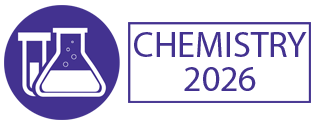Microarray Data Analysis
Microarray data analysis is a computational approach used to extract meaningful information from large datasets generated by microarray experiments. Microarrays are powerful tools for studying gene expression, DNA sequencing, protein-protein interactions, and other biological processes on a genome-wide scale. Microarray data analysis involves preprocessing steps such as background correction, normalization, and quality control to minimize technical variability and enhance data reliability. Statistical methods, machine learning algorithms, and bioinformatics tools are then applied to identify differentially expressed genes, patterns, and correlations within the dataset. Gene set enrichment analysis (GSEA) and pathway analysis tools are utilized to interpret the biological significance of gene expression changes. Visualization techniques such as heatmaps, clustering, and pathway diagrams aid in understanding complex relationships and patterns in the data. Microarray data analysis plays a crucial role in biomedical research, drug discovery, biomarker identification, and personalized medicine. Collaboration between biologists, bioinformaticians, statisticians, and computational scientists is essential for effectively analyzing microarray data and deriving meaningful insights. Continuous advancements in computational methods and high-throughput sequencing technologies drive innovation and improve the accuracy and efficiency of microarray data analysis.

Hossam A Gabbar
Ontario Tech University, Canada
Victor John Law
University College Dublin, Ireland
Alexander Bagaturyants
National Research Nuclear University MEPhI, Russian Federation
Sergey Suchkov
N.D. Zelinskii Institute for Organic Chemistry of the Russian Academy of Sciences, Russian Federation
Shree Niwas Chaturvedi
Centre for Aptitude Analysis and Talent Search, India
Pieter Samyn
SIRRIS, Belgium




Title : Advances in plasma-based radioactive waste treatment
Hossam A Gabbar, Ontario Tech University, Canada
Title : Unraveling the ultrastructure and functions of the neuronal membrane skeleton using super-resolution fluorescence microscopy
Zhou Ruobo, Djillali Liabes University of Sidi Bel Abbes, Algeria
Title : Solar box cooker dehydration, and relative humidity endpoint detection, of lamiaceae culinary leaves on the island of Crete
Victor John Law, University College Dublin, Ireland
Title : Nutrient and heavy metal loads from the Ribeiras to Coastal zones: A land-ocean continuum perspective in Madeira Island
Aracelis Del Carmen Narayan Rajnauth, University of Porto, Portugal
Title : Prospective polyoxometalate-based covalent organic framework heterogeneous catalysts
Arash Ebrahimi, Comenius University Bratislava, Slovenia
Title : Eliminating implant failure in humans with nano chemistry: 30,000 cases and counting
Thomas J Webster, Brown University, United States